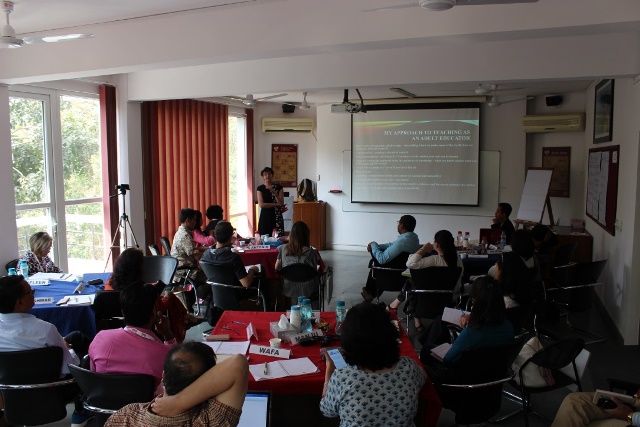| Date 14-Mar-2018 to 14-Mar-2018 |
Location PRIA |
Format International |
As part of ongoing Mentor Training Programme (MTP) under the theme Knowledge for Change (K4C), Dr Darlene Clover gave an enthusiastic, informative and very rich presentation on the Modes of Enquiry in Research.
With her best experience as a professor in the faculty of education at the University of Victoria, Canada, it was a like teacher talk but very interactive/participatory.
She started the session with confessions on the methods teaching research in her life as it changed a lot from beginning to now.
Ms. Clover described about her approach on understanding Adult education: Its issues, conflicts, theme found in universities, ngos and in movements, concerned with how gender and other ‘problematic’ positioning plays a role in Adult Education to shape and produce an identity to a feminist.
She further said that adult educator is not simply a facilitator but rather a combination of guide, educator and learner. Questions were asked by Darlene such as ‘why do women’s knowledge and experiences are not counted as that of men? why are women stories are not talked much ? etc. But she said that it taught her to ‘Question the unquestionable’
Her approach to teach as an adult educator through examples, storytelling, practicing deep listening – be sensitive on the context of silence and power relaxation they reflect.
It produced a very healthy discussion on the ‘silence in research’ by the participants. They said that people are ‘bound to be silent’ at times, silence can be resistant, silence is trust building etc.
Ms. Clover expanded and encouraged that everyone has the capacity to be creative. However, this could be done after ‘taking out’ the term fear in research. Later methods have been explained in details and were Creating group, choose interview, spend time analysis/visual analysis: how do we read? Images, visually, How do we see and so on .
She emphasised that dissemination is also an important in this context. One should know very clearly that who we want to read/see. Always keep your audience in mind.
After the presentation, an active participation from the participants was noticeable.
The event has 27 participants from different parts of world.
Snaps are given below: